To a degree this is a catch up week in that there were the final three talks for Kentish Saints and Martyrs and the Nightingale Lecture, as well as Dr Diane Heath’s stall at the Ash Heritage Centre 10th anniversary celebration last Saturday and a meeting of the Lossenham Project History group coming up this Friday. After that, we have a slight breather before the Centre’s events at the Canterbury Festival: six online evening events, with Diane’s talk also being face to face and my two guided walks in conjunction with FCAT. Oh, and the book launch at Faversham Guildhall of Maritime Kent through the Ages which is also coming up soon.
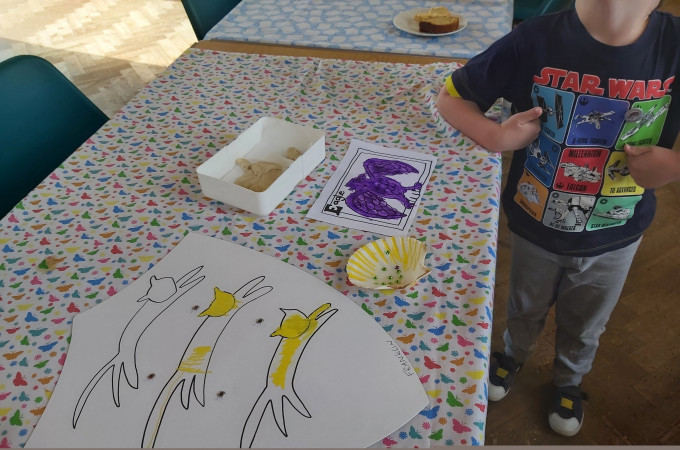
Although not quite in chronological order, I thought I would start with a brief report on Professor Catherine Richardson’s Michael Nightingale Memorial Lecture because this is one we have recorded and thus is available through Teams: https://teams.microsoft.com/l/meetup-join/19%3ameeting_NzU2NzQ4N2QtMGU2MS00ODgyLWEyYzAtN2QwMTdiZGVmYmY0%40thread.v2/0?context=%7b%22Tid%22%3a%220320b2da-22dd-4dab-8c21-6e644ba14f13%22%2c%22Oid%22%3a%225438ffb7-ff66-44f6-9ccf-cf504309571b%22%2c%22IsBroadcastMeeting%22%3atrue%7d&btype=a&role=a (if you don’t have Teams on your device, just watch anonymously, it still works). However, firstly I want to thank Dr John Nightingale, chairman of the trustees of the Agricultural Museum, Brook, for all his assistance including providing a short summary about how the Museum came into being and the role of his father Michael Nightingale. Moreover, it was great to be able to record more Ian Coulson Memorial Postgraduate Award holders, in this case Tracey Dessoy, Peter Joyce and Jane Richardson.
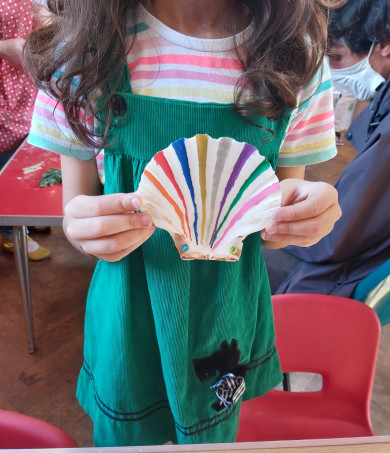
Regarding Catherine’s lecture, I was especially interested to hear what she had to say because I used to live not far from the Weald and Downland Museum, and it remains one of my favourite places. As she said, she has employed the idea of ‘practice research’ since her time as a doctoral student, and over the last two decades she has developed these ideas far more and in collaborative ways both with academics and museum curators. Even though this has not been exclusively in the southeast of England, involving among other organisations the Shakespeare Birthplace Trust, the Weald and Downland Museum has perhaps offered the greatest opportunities because of its ethos of setting its buildings in a relatively tight time period. Thus, unlike some other national organisations, you don’t move from a Tudor parlour to a Stuart gallery to a Victorian kitchen, but rather stay in what might be called a Tudor setting. Furthermore, the houses and other buildings at the Museum would have been instantly recognisable to the yeoman farmers and their urban counterparts as the type of dwelling and workspaces they would have inhabited alongside their neighbours.
Again, perhaps not surprisingly, Catherine’s various research projects on the material culture of the ‘middling sort’ has centred on textiles, and the topic that she concentrated on last night was painted clothes. As she said, they often crop up in Kent 16th-century inventories but seldom are valued as worth much by appraisers. Rather, they are often said to be worn but nevertheless their widespread use suggests that they were a significant item within the lived experience of the household. Consequently, Catherine and her colleagues used the opportunity presented by the Museum wanting a new painted cloth for the high end of the hall at Bayleaf Farmstead to undertake some practical research for both the production and reception of such an item. Watching how the cloth was produced – the choice of design based on contemporary wall paintings, the make-up of the paints, the execution of the different brush strokes was also fascinating, but equally how the team reacted once it was in place. Thus, for example, the effect of seeing it by candlelight, the working out of the optimal distance from it to view it, the impact of seeing it from outside through the unglazed windows – all, while never totally able to recreate what Tudor people would have ‘seen’, still enabled Catherine to gain a much greater appreciation of the lived experience.

So all these aspects and much more made this a captivating lecture, as was evidenced by the number and range of the questions. Consequently, if you were not able to see it either in person or livestreamed on Tuesday, I would strongly recommend looking now.
Turning to the ‘Kentish Saints and Martyrs’, we were in St Dunstan’s last Thursday to hear Dr Doreen Rosman consider Canterbury’s 16th-century martyrs from both sides of the religious spectrum. Booking ending her assessment with Elizabeth Barton, the ‘Holy Maid’ of Kent, Doreen produced a marvellous analysis of what drove these men AND women to be prepared to die for their faith. Moreover, she highlighted why people were prepared to kill others because both sides were convinced that theirs was the true faith and thus it was imperative to destroy those who opposed their views because of the danger they posed to the saving of souls. For belief in eternal bliss and eternal damnation meant that putting to death or suffering a martyr’s fate was nothing in comparison to the risk of losing all in the life to come. Furthermore, there was the added issue for both sides of the need to cleanse society of evil, to rid it of the contamination of heresy, ideas that had been equally apparent in Kent under Archbishop Chichele when he faced what he saw as the spiritual dangers posed by Lollards in the early 15th century. Consequently, to illustrate her points Doreen provided a number of case studies, including well-known martyrs such as Archbishop Cranmer and Sir Thomas More, the latter highly appropriate for St Dunstan’s, but also the lesser known ordinary men and women – in many ways people from Catherine’s ‘middling sort’ who from Kent’s rural and urban communities found themselves incarcerated in Canterbury castle, the county jail, before being taken to an area now known as Martyrs’ Field where they suffered execution through being burnt at the stake – a death both actual and symbolic.
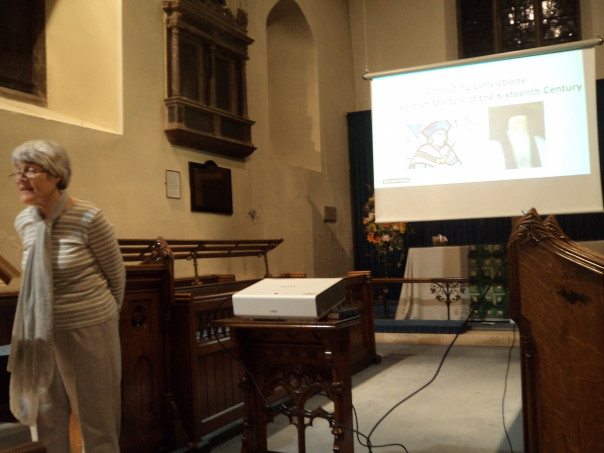
Doreen also explored how Foxe’s Book of Martyrs not only coloured responses in Elizabethan Canterbury and England more broadly, but how it had a lasting effect on how martyrs from either side of the divide were envisaged – Catholic martyrs languished in obscurity, their Protestant counterparts lauded for their steadfastness and remembered through commemoration in stone. Thus, Doreen provided much for people to consider, as became apparent from the audience’s questions.
On the Friday we moved to St Peter’s where I gave a second talk on the minor and failed cults of late medieval Kent. As for the Anglo-Saxon women I used four case studies – St William of Perth/Rochester, St Robert of Newington, St Thomas of Dover and Archbishop Sudbury. Of these, the first three are largely shadowy figures before their apparent martyrdom, but that in some ways was part of their appeal because they were ordinary people whose death marked them out for veneration in the communities at or close to where they had been killed. Moreover, miracles were claimed to have occurred and they received tomb-shrines or altars, thereby giving a locus for veneration, while supporters for each were able to claim some linkage to Becket, highly valued in a county where much came under St Thomas of Canterbury’s shadow. In contrast, Archbishop Sudbury really could not be claimed to be an ordinary person’s saint, for as a high-ranking churchman he was also one of the king’s senior officers. Thus, the promotion of a cult was unlikely to be successful as a ‘top-down’ enterprise and even though he was seemingly backed by Christ Church Priory and Canterbury’s civic authorities, he was not a saint whom ordinary people could relate to, he did not belong to the people. This meant I was able to come full circle and agree with Dr Rachel Koopmans that saints’ cults have their roots in stories, and even more in the telling of these stories in conversations that circulated through the retelling, drawing their impetus from orality rather than the setting down of such narratives in miracle collections by monks and others, thereby highlighting, I would want to argue, the value of studying ‘history from below’.
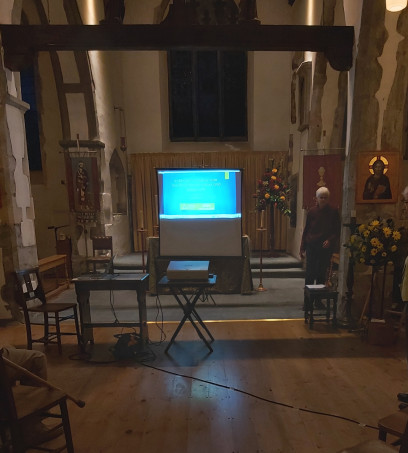
This rather neatly brings me to Saturday evening and Rachel Koopman’s lecture in St Thomas’ RC church that explored the importance and value placed on clothing relics. This was especially appropriate because St Thomas’ has such a relic. As Rachel discussed, medieval culture was well-attuned to the symbolic value placed on clothing whether we are talking the representation of status and wealth, the intention to prohibit social mobility through the sumptuary laws or the display of charity through the giving away of clothing – Christ’s ‘clothing the naked’.
Rachel then took her audience through Thomas Becket’s life to explore how and why he dressed as he did, looking at his time as chancellor as well as his time as archbishop and the need to dress to represent his office that might be said to have gone well beyond personal taste. She also explored the significance of his hairshirt, as well as his dressing as a monk and how clothing was more than symbolically a means to demonstrate his humility, thus making relics of the hairshirt especially valued by those who venerated him. Furthermore, such scraps of cloth were viewed as miracle workers, these contact relics becoming highly desirable items, and, as Rachel explained, the monks having first given away pieces of Thomas’ blood-stained garments apparently within a short space adopted a policy of giving these clothing fragments to their elite pilgrims.
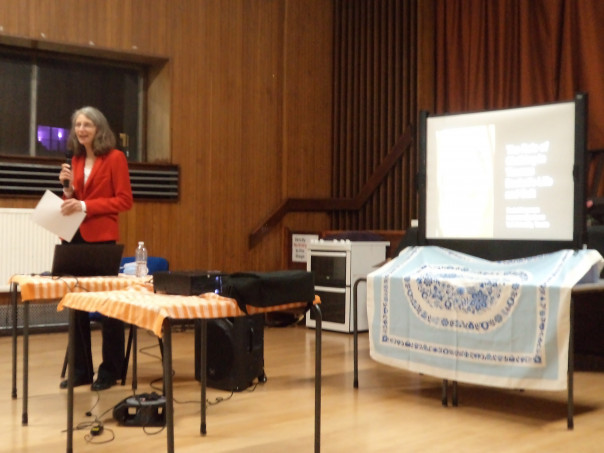
Again, all of this drew a wide range of questions from the highly attentive audience and thus this was a fitting finale to the lecture series. I thought, therefore, that I would just record a few of the comments the series drew such as, “May I say how much I enjoyed the talk last Thursday evening”, ‘we greatly enjoyed hosting the first three [talks]”, “It was particularly interesting to hear of the women (especially St Mildred) and the huge contribution they have made, but not always mentioned”, and “I enjoyed Rachel’s talk last night. It was excellent”. Furthermore, I would like to record my thanks to all the churches, speakers and audiences, as well as suggesting that the series demonstrated the value of knowledge exchange and collaboration between university and city.
 Centre for Kent History and Heritage
Centre for Kent History and Heritage Sheila Sweetinburgh
Sheila Sweetinburgh 1489
1489

